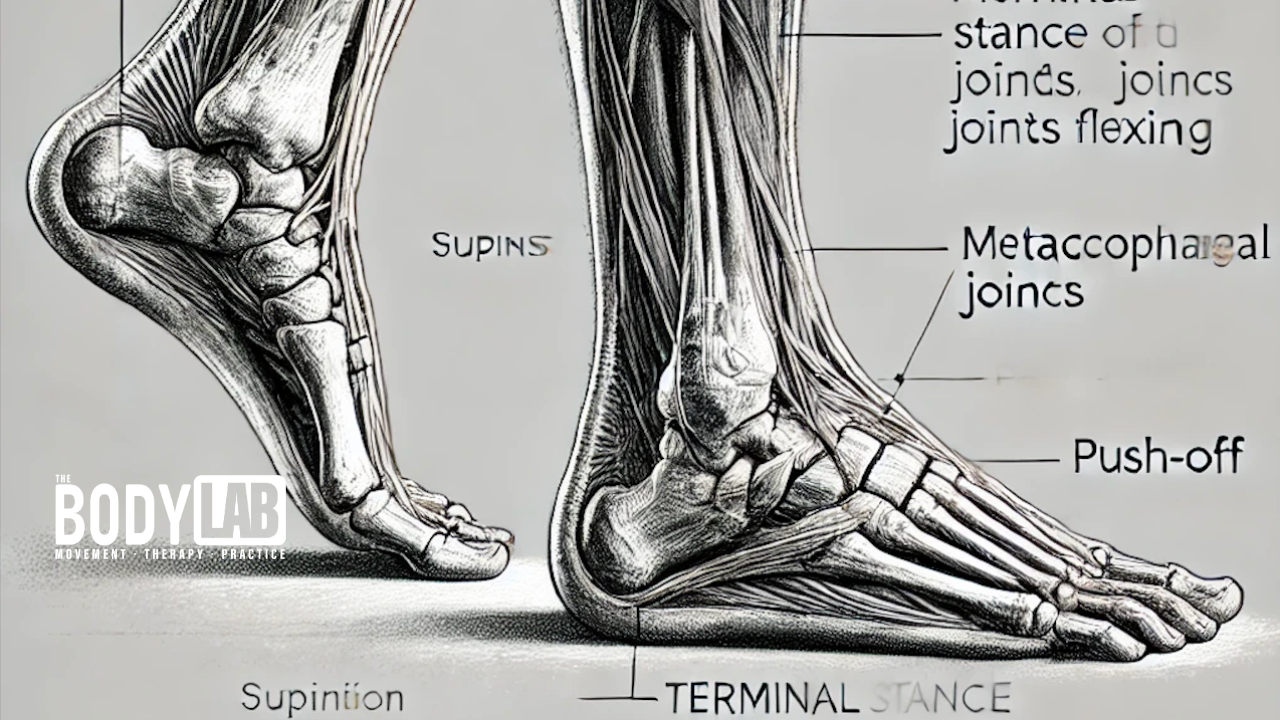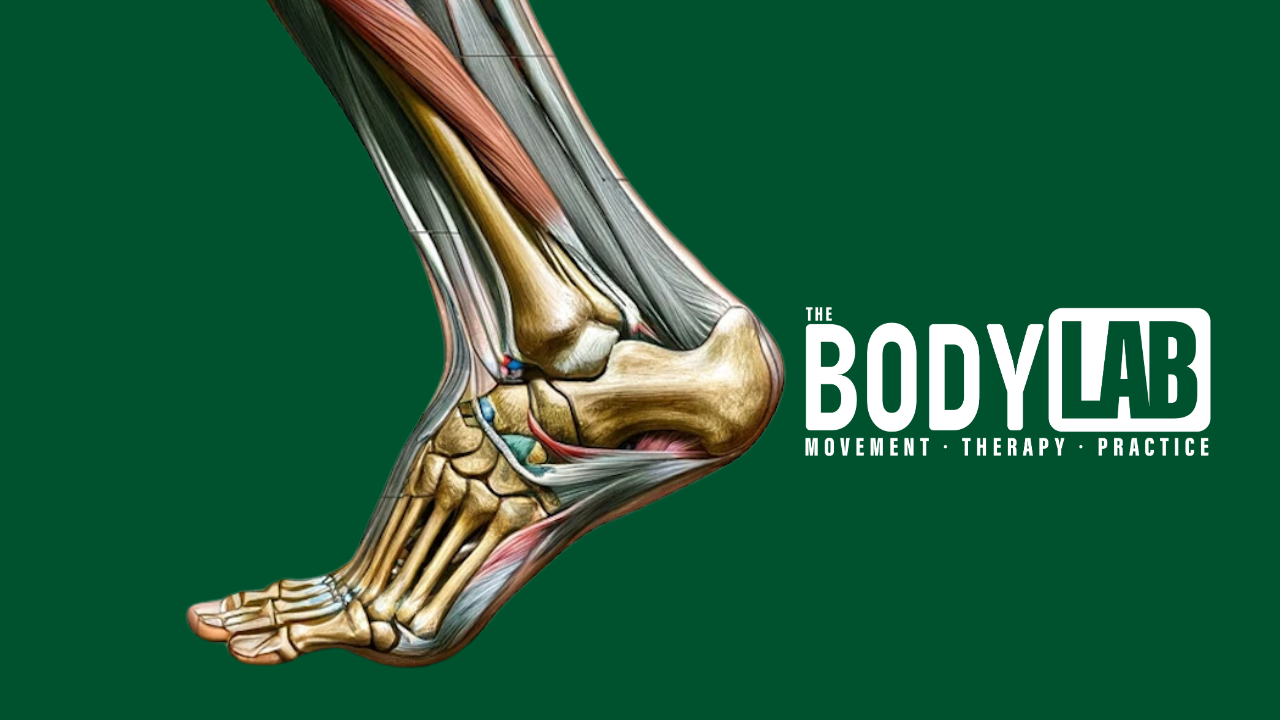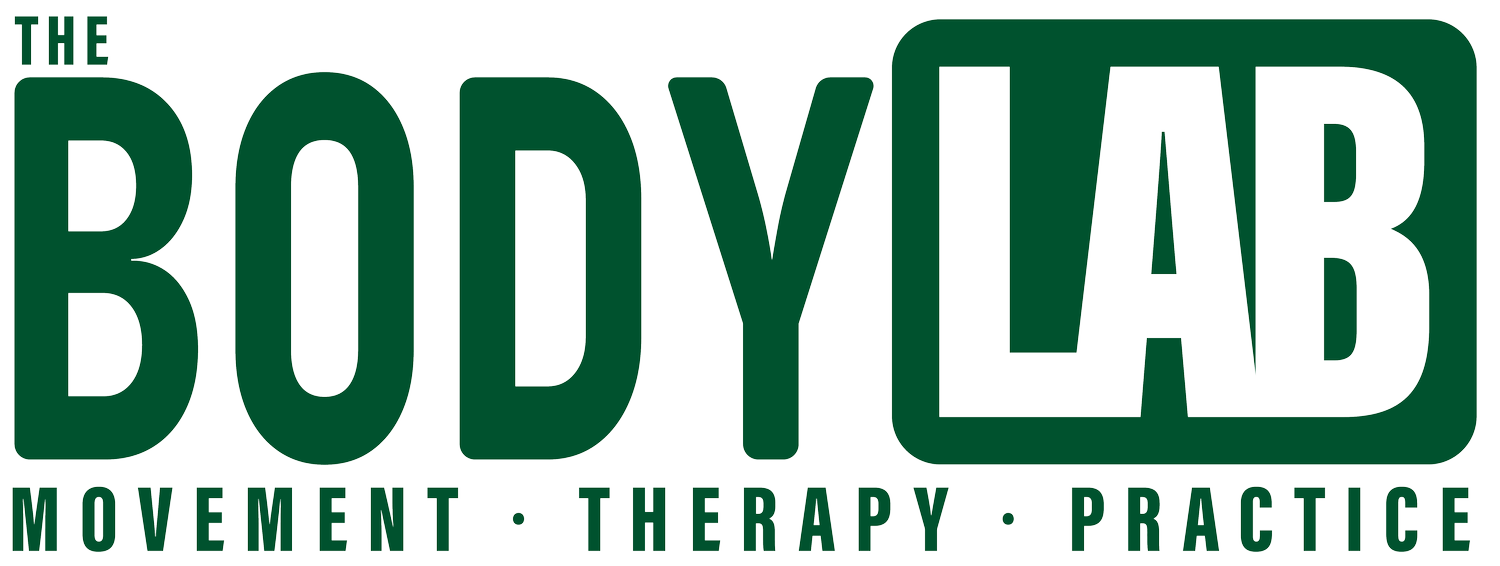
Terminal Stance in the Gait Phase
The gait cycle is a multifaceted process comprised of several distinct phases, each integral to efficient human locomotion. The phases can be categorised into two main phases: the stance phase and the swing phase (more information here). Within these phases, multiple events occur that are critical for maintaining balance and facilitating movement.
Initial Contact (Heel Strike): This phase marks the moment the heel first touches the ground, transitioning into the stance phase. During initial contact, the ankle is dorsiflexed, the knee is extended, and the hip is in flexion. This positioning helps absorb impact forces while preparing the body for weight transfer. Proper joint mechanics during this phase play a vital role in ensuring stability and efficiency, thereby minimizing the risk of injury.
Loading Response: Following initial contact, the loading response phase occurs as the body weight shifts to the leading limb. The knee flexes, and the ankle continues moves into dorsiflexion. This phase is essential for further absorbing shock and stabilising the body as the center of mass transitions forward.
Midstance: During midstance, the body’s weight is fully transferred onto the supporting limb, and both feet are in contact with the ground. This phase allows for equilibrium, as the ankle is in a neutral position, and the knee is extending from a flexed position. The hip stabilises to maintain alignment, setting up for the terminal stance phase.
Understanding Terminal Stance in the Gait Cycle: A Detailed Breakdown
As the cycle progresses, terminal stance (heel-off) represents the transition from midstance to toe-off. At this point, the body’s weight shifts over the supporting leg, and the ankle continues to plantarflexes while the foot supinates to create a rigid lever for push-off. This phase is key for generating forward propulsion and involves complex movements in the sagittal, frontal, and transverse planes. The mechanics in this phase—particularly at the ankle, knee, and hip—allow for efficient energy transfer, preparing the body for the swing phase. Misalignments during terminal stance can lead to overuse injuries, especially in the foot and lower limb.
The Importance of Terminal Stance
The terminal stance phase, occurring after midstance and preceding toe-off, is essential for efficient gait mechanics and energy transfer. During this phase, the foot moves from a neutral pronated position into supination. The foot becomes a rigid lever, allowing for the optimal push-off required for propulsion. Without proper terminal stance mechanics, the efficiency of the entire gait cycle can be compromised, potentially leading to overuse injuries or chronic conditions like plantar fasciitis and Achilles tendinopathy.
The body’s weight is transferred from the heel to the forefoot, and the toes, especially the big toe (hallux), begin to dorsiflex in preparation for toe-off. In this phase, the lower limb works as an integrated unit to propel the body forward, with precise coordination of joint movements at the ankle, knee, hip, and pelvis. Poor terminal stance mechanics, such as delayed or inadequate supination, can lead to a lack of propulsion, increased energy expenditure, and biomechanical inefficiencies.

Joint Mechanics During Terminal Stance
To fully comprehend the terminal stance phase, it is necessary to analyse the joint actions of the lower limb in all three planes of motion: sagittal, frontal, and transverse. Here, we provide a detailed breakdown of the movement patterns at the foot, ankle, knee, hip, and pelvis during this crucial phase of the gait cycle.
Foot and Ankle Mechanics
• Sagittal Plane: In terminal stance, the ankle transitions from dorsiflexion (achieved during midstance) into plantarflexion as the heel rises off the ground. This movement is facilitated by the concentric contraction of the gastrocnemius and soleus muscles. The plantarflexion helps generate the necessary force to propel the body forward. The tibialis posterior also plays a significant role by stabilising the arch and preventing excessive pronation as the foot prepares for supination.
• Frontal Plane: In the frontal plane, the foot moves from a neutral position into a supinating position, facilitated by the inversion of the subtalar joint. This supination, which increases arch height, transforms the foot into a rigid structure capable of generating effective push-off. Proper supination is essential for distributing forces during propulsion and preventing excessive lateral movement.
• Transverse Plane: In the transverse plane, the foot undergoes external rotation, aiding in the supination process. This external rotation aligns the foot for toe-off, ensuring the forces generated during propulsion are efficiently directed forward. The coordination of external rotation in the transverse plane with supination in the frontal plane is critical for optimising the Windlass Mechanism, which engages as the metatarsophalangeal (MTP) joints dorsiflex.

Knee and Hip Mechanics
Knee Mechanics
• Sagittal Plane: During terminal stance, the knee joint moves from a slightly flexed position (around 15 degrees during midstance) into near extension. This extension helps stabilise the leg and prepares the body for push-off. The quadriceps, particularly the rectus femoris, assist in maintaining knee extension, while the hamstrings contract eccentrically to control the forward momentum of the body.
• Frontal Plane: In the frontal plane, the knee experiences a subtle amount of abduction as the body shifts weight laterally. This movement ensures proper alignment of the lower limb and helps maintain balance during the forward propulsion phase.
• Transverse Plane: The knee undergoes external rotation in coordination with the tibia and foot. This external rotation ensures that the knee is properly aligned with the foot for the upcoming toe-off phase, reducing the risk of excessive rotational forces that could lead to injury.
Hip Mechanics
• Sagittal Plane: The hip joint in terminal stance moves into extension, driven by the contraction of the gluteus maximus and hamstrings. This hip extension is crucial for generating forward momentum and preparing the contralateral leg for the swing phase. The extension of the hip also aids in stabilising the pelvis, ensuring efficient transfer of forces through the lower limb.
• Frontal Plane: In the frontal plane, the hip experiences slight abduction, which contributes to maintaining pelvic stability. The gluteus medius is highly active during this phase, ensuring that the pelvis remains level and that the body is properly aligned for the upcoming weight transfer to the opposite leg.
• Transverse Plane: The hip undergoes external rotation in the transverse plane, aligning with the external rotation occurring at the knee and foot. This movement aids in the supination of the foot and prepares the leg for the swing phase.
Pelvic Mechanics
• Sagittal Plane: The pelvis remains in a posterior tilt during terminal stance, accommodating the forward position of the extended leg. This posterior tilt ensures that the trunk remains aligned with the lower limb, facilitating efficient energy transfer.
• Frontal Plane: From a frontal view, the pelvis remains relatively level.. This level pelvis necessary for maintaining balance as the body prepares to shift weight onto the opposite leg.
• Transverse Plane: The pelvis undergoes rotation away from the stance side, aiding in the forward propulsion of the body. This forward rotation also ensures that the contralateral leg is properly positioned for the swing phase.
Functional Movement and the Role of Musculature during terminal stance
The gastrocnemius and soleus muscles work together to achieve plantarflexion at the ankle joint, which is critical during terminal stance. As the heel rises, these muscles contract concentrically, propelling the body forward. This plantarflexion also contributes to the lengthening of the stride and prepares the body for the swing phase of gait. The tibialis posterior acts in a stabilizing role, particularly in the frontal plane, where it helps control the foot’s movement from pronation into supination as the foot prepares for toe-off. This supination ensures that the foot becomes a rigid lever, providing the necessary stability for effective propulsion.
The quadriceps and hamstrings work together to stabilize the knee during terminal stance. The quadriceps help prevent excessive knee flexion, while the hamstrings assist with hip extension, contributing to the forward momentum of the body. The gluteus maximus plays a central role in hip extension during terminal stance, pushing the thigh backward and driving the body’s propulsion. Meanwhile, the gluteus medius ensures pelvic stability by keeping the pelvis level as the body prepares for the swing phase.
This phase is where the Windlass Mechanism plays a pivotal role. As the metatarsophalangeal (MTP) joints dorsiflex, the plantar fascia tightens, elevating the arch of the foot and transforming it into a rigid lever. This process allows for efficient push-off and transfers the force generated during plantarflexion into forward propulsion.
Clinical Relevance of Terminal Stance
Dysfunctions or abnormalities during the terminal stance phase can lead to a host of movement inefficiencies and an increased risk of injury. Some of the most common clinical issues include:
1. Plantar Fasciitis: When the Windlass Mechanism fails to engage properly, the plantar fascia can experience excessive strain. The inability to properly tighten the plantar fascia results in inefficient propulsion, which increases stress on the foot and often leads to plantar fasciitis. This condition presents with sharp heel pain, particularly during the push-off phase of gait.
2. Achilles Tendinopathy: The Achilles tendon experiences significant loading during the terminal stance phase. Excessive plantarflexion or improper control of the ankle joint can exacerbate Achilles tendinopathy, a condition characterized by inflammation and degeneration of the tendon. Individuals suffering from Achilles tendinopathy may experience pain during the push-off phase, particularly when transitioning from dorsiflexion to plantarflexion.
3. Overpronation: Individuals with flat feet or overpronation struggle to achieve proper supination during terminal stance. As a result, the foot remains overly flexible, reducing the efficiency of propulsion and increasing the risk of injuries higher up the kinetic chain, such as knee or hip pain. Overpronation can also result in an ineffective Windlass Mechanism, further exacerbating inefficiencies in the gait cycle.
4. Knee Valgus: If knee alignment is compromised during terminal stance, such as in cases of knee valgus (inward knee collapse), the alignment of the lower limb becomes compromised. This misalignment can lead to inefficient energy transfer, placing additional stress on the knee and hip joints and increasing the risk of patellofemoral pain syndrome or hip impingement.
5. Hip Pathologies: The terminal stance phase requires adequate hip extension to generate forward propulsion. Conditions like hip impingement or gluteal tendinopathy can restrict hip extension, limiting the body’s ability to move forward efficiently. Patients with limited hip mobility may compensate by increasing knee extension or lumbar lordosis, both of which can lead to additional musculoskeletal issues.
Conclusion
The terminal stance phase of gait is essential for efficient forward propulsion and energy transfer. During this phase, proper joint mechanics—such as ankle plantarflexion, knee extension, hip extension, and the engagement of the Windlass Mechanism—are crucial for maintaining balance, stability, and effective movement. Dysfunction at any level of the kinetic chain during terminal stance can lead to inefficiencies, poor movement patterns, and increased injury risk.
Understanding the mechanics of this phase allows clinicians and movement specialists to diagnose and treat a wide range of gait abnormalities. By focusing on restoring proper supination, plantarflexion, and muscular activation patterns, professionals can help individuals optimize their gait patterns, reduce injury risk, and improve overall movement efficiency. As such, terminal stance plays a pivotal role in the larger context of gait analysis and rehabilitation, especially when considering conditions such as plantar fasciitis, Achilles tendinopathy, and overpronation.
References
• Bolivar, Y.A., Munuera, P.V., Padillo, J.P., et al. (2013). The Windlass Mechanism in individuals with plantar fasciitis: a biomechanical analysis. Foot and Ankle International, 34(9), pp. 1256-1262.
• Kim, H.J., Lee, Y.S., Kim, T.H., et al. (2011). Plantar Pressure Analysis in Gait. Journal of Biomechanics, 44(3), pp. 15-21.
• Maffulli, N., Longo, U.G., Denaro, V. (2015). Achilles Tendinopathy and Activity Levels in Sports. Clinical Sports Medicine, 24(2), pp. 258-266.
• Perry, J. (1992). Gait Analysis: Normal and Pathological Function. SLACK Inc.
• Whittle, M.W. (2014). Gait Analysis: An Introduction. Elsevier Health Sciences.
